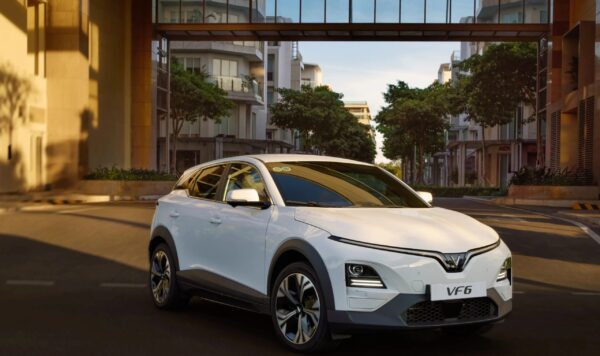Company description: Technology innovator
paragon was established by founder and major shareholder, Klaus Dieter Frers in March 1988. It was originally an industrial electronics subcontract manufacturer, but subsequently focused on automotive electronics and systems supply and moved into adjacent markets. It has consistently used its engineering capabilities to identify trends ahead of the OEMs and provide innovative solutions to address them. The organic growth strategy has been supplemented by acquisitions. The addition of HS Genion in December 2017 is another example, providing a path to it becoming the clear leader in body kinematics systems. The purchase of Concurrent Design in April 2018 adds technical expertise to enhance Voltabox’s development capacities, while the Navitas acquisition should profitably extend the value chain towards highly customised battery cell production.
Change of corporate legal structure to a KGaA
The company has changed its legal structure to that of a KGaA, a partnership limited by shares. In this structure the company is composed of a general partner and limited liability shareholders. It is a fairly common structure in Germany with companies such as Hella and Fresenius examples of listed entities operating under KGaA structures.
The KGaA structure consists of a general partner to manage the business, which would be paragon GmbH, 100%-owned by the Frers family with managing directors appointed by them. The limited liability shareholders would elect the supervisory board of paragon Gmbh & Co. KGaA at annual general meetings, who would also provide oversight of paragon Gmbh. It is a popular corporate structure with family-controlled entities in Germany, such as paragon, as it maintains effective control while increasing access to capital markets.
Essentially it should mean that paragon can raise funds to pursue its growth strategy without the family necessarily taking up its full pre-emption rights in future capital raisings. To maintain control under the previous structure, pre-emption fulfilment by the Frers family would have been required, meaning it was a potential constraint to investment decisions being progressed. In turn, the ability to raise additional funds without full subscription by the Frers family could increase the free float of paragon shares and allow them to be included in DAX indices in the future, further increasing the attractiveness of the stock to certain funds.
Exhibit 1: KGaA structure
|

|
|
|
The advantages of the change in structure include:
■
Continue the growth strategy and preserve the family-owned culture of the business.
■
Maintenance of the management involvement and strategic input from the founder.
■
Greater access to capital markets, removing a potential conflict of interest if the Frers family decides not to participate in future fundraisings to support growth initiatives.
Disadvantages are:
■
More limited shareholder ability to influence the management of the company, especially if non exercise of pre-emption rights in future capital raising were to occur.
■
Removal of potential speculative factors. Any change in ownership would need to be approved by the managing entity.
On balance the company believes the positives outweigh the negatives for shareholders, as the ability to grow the company is enhanced for the benefit of the family and shareholders alike.
Following ratification at the AGM on 5 May 2018, the conversion to the new KGaA structure was completed on 5 July 2018. The founder, Klaus Dieter Frers is chairman of the board of the general partner company, paragon GmbH. Other board members are Dr Stefan Schwehr the chief technology officer (CTO) and the new head of automotive operations Dr Matthias Schöllmann, who has been appointed from 1 September 2018. He was previously at Hella, another family KGaA. Mr Christian Johansson joined from Webasto as the new head of finance on 1 July 2018.
Company operating structure
Since a reorganisation at the start of 2017, the group has been operating under three divisions Electronics (sensors, cockpits and acoustic), Electromobility (Voltabox; battery modules and management systems) and Mechanics (body kinematics; now renamed movasys following the HS Genion integration). These are supported by the central manufacturing organisation, productronic, which provides economies of scale in manufacturing and is charged to the divisions depending on utilisation. The Electromobility division, which consists of Voltabox, was part floated in October 2017 via the listing of 39.97% of its shares on the Frankfurt Stock Exchange.
Exhibit 2: paragon divisional structure and product portfolio
|

|
Source: paragon, Edison Investment Research
|
paragon’s philosophy of highly automated, centralised manufacturing of products designed for ease of production provides a competitive advantage over many of its peers. The competitive landscape is fragmented, with few peers operating across more than a couple of paragon’s product lines.
As a result of the recent corporate adjustments the current group structure is shown in Exhibit 3.
Exhibit 3: Current corporate structure
|

|
|
|
Strategy to PUSH into a new era
paragon is evolving its strategy under an initiative known as PUSH 2018:
■
P – paragon’s identity provides culture of change
■
U – understand global disruption of the supply chain
■
S – shape future car trends
It is a natural development of the strategy of utilising paragon’s core competences in technological innovation and engineering resource to identify global megatrends affecting the automotive market, and provide solutions to improve the driving experience of passenger cars. Using the push principle, products are only presented to OEM customers once prototypes are developed and patents filed, providing significant IP protection. It also differentiates paragon from many of its automotive supply peers who tend to be reactive to OEM requirements. It enables paragon to dominate key product niches in the premium segments, with competitiveness maintained through the investment in cost-efficiency and increasing M&A integration scale.
The approach maintains the philosophy instilled by the founder and CEO since the company was formed in 1988. The agility and entrepreneurial nature of the business has allowed it to grow through product development, increased market penetration, development of new markets and diversification into new submarkets. The resultant emergence of Electromobility and Mechanics as high-growth segments are clear outcomes from the strategy.
In addition, the development of increasingly sophisticated products is enabling improved sales prices per product, with an average increase in 2017 of 16%, or 25% since 2015. The trend is important as the electronics product portfolio transitions from one generation to the next.
Global megatrends driving innovation
The global megatrends that paragon considers relevant to its strategic development remain consistent. These are
■
Urbanisation – causing increased air pollution and the requirement for shared mobility. These are driving requirements for air quality solutions and comfort products such as infotainment systems in autonomous vehicles.
■
Digitalisation – autonomous driving requires mandatory driver monitoring and contactless evaluation of vital data. Improved connectivity and control systems including wireless charging, and high performance in car communication and sound systems are also important drivers.
■
Carbon reduction – drives more efficient vehicles to improve and optimise fuel efficiency including reduced drag with adaptable components, as well as the move to increasing electrification of vehicle motive power sources and drivetrains.
■
Increasing comfort – the provision of more convenient interaction with vehicles including instrument displays as well as gesture, tough and voice recognition control systems
Continuing to diversify the customer base
paragon’s strategy has enabled it to remain a leading Tier 1 partner of its Electronics segment’s historic customer base of premium automotive OEMs in Germany. Since opening the Chinese production facility of paragon Automotive Zunshan in 2015, several Chinese automotive OEMs have been added to the customer roster, and provide an opportunity for increased sales of certain products in the future. Similarly, products are expected to be adopted by US manufacturers as they respond to European quality. The growth of Electromobility also extends paragon’s international footprint, as it develops new end-market subsegments such as intralogistics (forklift trucks and automated guided vehicles), trolley buses, mining equipment, agricultural vehicles and motorcycles.
Exhibit 4: paragon customer mix FY17
|

|
|
|
The proportion of sales derived from the top premium German automakers (VW Group, Daimler and BMW) continues to decline, and we expect it to reduce from c 70% in FY17 to around 55% in FY18 largely due to the strong growth of Voltabox, which is forecast by management to account for more than a third of revenues this year.































